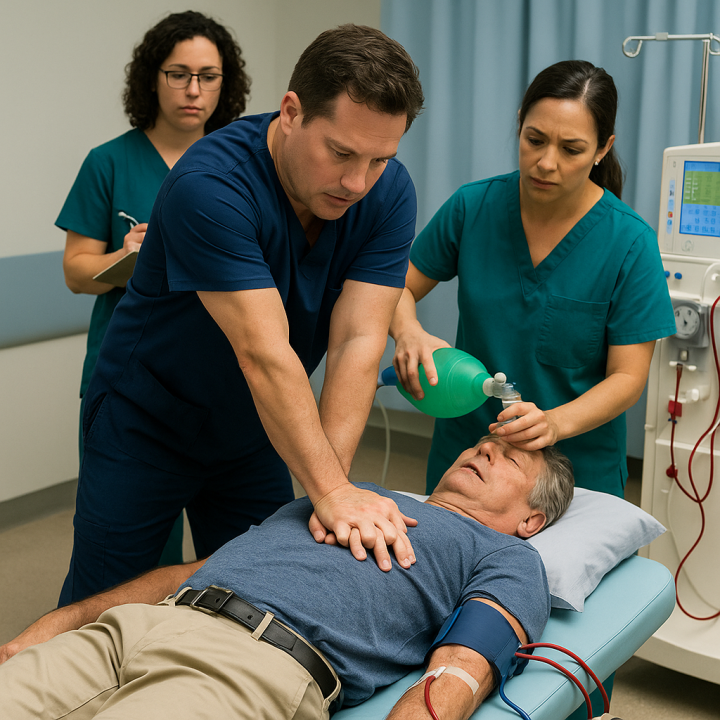Patients on dialysis are at significantly higher risk of cardiac arrest — both in dialysis clinics and in the hospital setting. In fact, cardiac causes are the leading cause of death in patients with end-stage renal disease (ESRD). If you work in dialysis units, emergency departments, or critical care, it’s crucial to understand the special considerations for performing CPR in these patients.
Why Are Dialysis Patients at Risk?
- Fluid & Electrolyte Imbalances
Shifts in potassium, calcium, and fluid status during dialysis can lead to arrhythmias. - Cardiac Structural Changes
ESRD often causes left ventricular hypertrophy and fibrosis, increasing susceptibility to arrhythmias. - Coronary Artery Disease
Common in this population — can trigger ischemic events.
What to Watch For When Performing CPR
1. Vascular Access Sites
Patients will often have AV fistulas, grafts, or central venous catheters:
- Avoid compressions or IV placement on the arm with a fistula.
- Protect the access site from damage during resuscitation.
2. Hyperkalemia
- A frequent cause of cardiac arrest in dialysis patients.
- If the monitor shows wide QRS, sine wave pattern, or asystole — think hyperkalemia.
- Administer calcium chloride, insulin/glucose, and consider sodium bicarbonate per ACLS guidelines.
3. Fluid Shifts & Hypotension
- Cardiac arrest may occur shortly after rapid fluid removal during dialysis.
- Be cautious with fluid administration and volume status management.
4. Airway & Ventilation
- ESRD patients may have pulmonary edema.
- Ensure adequate oxygenation and consider positive pressure ventilation as needed.
5. Adjust ACLS Medications if Needed
- Some medications may have altered clearance in ESRD.
- Be mindful of dosing and consult pharmacy if time allows.
6. Post-ROSC Considerations
- Monitor closely for electrolyte rebound after ROSC.
- Rapid correction of hyperkalemia post-ROSC may be lifesaving.
Conclusion
CPR in dialysis patients requires awareness of unique risks: electrolyte imbalances, fluid shifts, vascular access, and cardiac remodeling. Recognizing hyperkalemia as a frequent cause of arrest — and responding quickly — can save lives. Emergency teams should always maintain a high index of suspicion and be prepared to adapt ACLS protocols accordingly.


